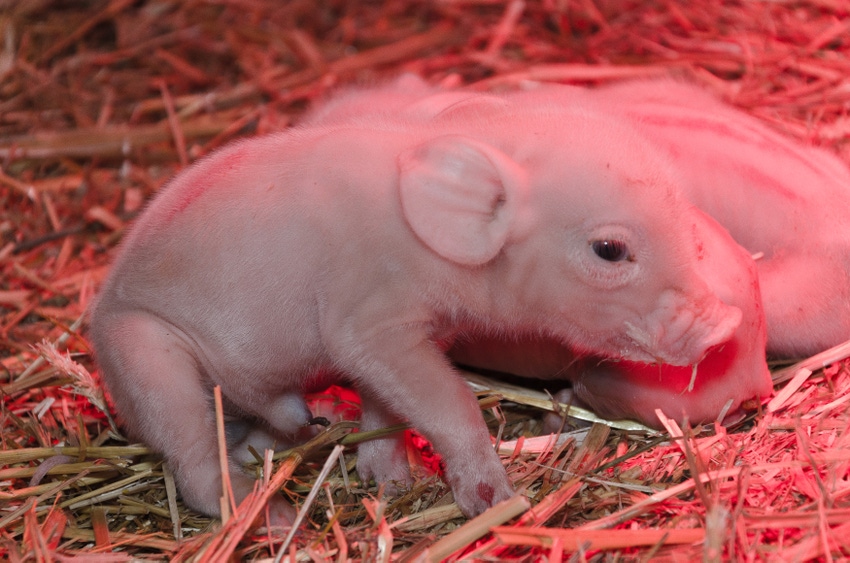Better early nutrition, better brains
Piglet study discusses model for understanding nutrition and brain development.
January 19, 2017

Pediatric nutrition research has shown the important effects of early-life nutrition on a baby’s development — especially the gastrointestinal tract — and more recent research indicates that nutrition may also have an influence on an infant’s brain as it develops.
Does nutrition in the first weeks of life play a bigger role in later behavioral outcomes like memory and fine motor skills?
For nearly a decade, researchers at the University of Illinois have studied the piglet as a translational model to understand which aspects of early brain development are affected by nutrition interventions.
Because of striking similarities in human infant and piglet brain development patterns, studies using the piglet have helped lead to advances in pediatric nutrition. This is important as makers of infant formula seek to create a product that more closely reflects the composition of mother’s milk.
In a recent review article published in Advances in Nutrition, University of Illinois animal scientist Ryan Dilger and Austin Mudd, a doctoral student in the neuroscience program, provided background for the work they do with nutrition and neurodevelopment using the piglet as a model.
The new paper highlights several studies on pediatric nutrition where brain development outcomes were the primary interest. The paper also describes technologies, including advances in magnetic resonance imaging (MRI), that are being used to assess brain development and outlines areas for future nutrition and neurodevelopment research.
“This review integrates all the background material for what we do in our lab. We are hoping that this serves as a reference that others can go to for why we use the piglet to study pediatric brain development,” Dilger said. “It’s the cornerstone for what we’ve been studying.”
Click here for a video of Dilger discussing his lab’s work with pediatric nutrition and neurodevelopment.
Dilger said the hope with the review is to standardize the types of outcomes that are used to assess brain development and then to find out which of those outcomes are sensitive to dietary interventions.
Part of that is having a clear understanding of how the infant brain is developing in the early days and weeks after birth.
Dilger explained, “The brain is made up of individual regions that are interconnected in what they do and how they function and in the way they are growing and maturing over time.”
MRI methods have allowed researchers to characterize volume changes in areas of the piglet brain from two to 24 weeks of age, showing a similar growth pattern to human infants. Mudd explained that one month of volumetric brain growth in a human is equivalent to approximately one week in piglet growth. This allows for assessment of learning and memory during critical times of brain growth, which can be translated to people.
“When people first started researching the pig and nutrition and brain outcomes, they were only weighing the brain or assessing global fatty acid content of the brain. However, we know from human work that different brain regions mature at different rates. So, you may not see an effect of dietary intervention in the whole brain, but if you were to look at specific brain regions at different time points, you might see a dietary effect," Mudd said.
"It is clear now that we should be looking at individual brain regions in a dietary intervention study rather than assessing the brain as one unit. From these types of studies, we can start to identify optimal windows in which developing brain regions are differentially sensitive to nutrition,” he added.
Other techniques described involve behavioral assessments with piglets to assess learning and memory, such as spatial mazes, and the review provides which dietary references were used with each method.
“A focus of this paper is standardizing the procedures we use,” Dilger said, adding that he also hopes the review can help nutritionists understand the neurodevelopment side of pediatric nutrition and research. “It is written for a nutrition audience, but it translates the language that a neuroscientist would use. As a review, it is less about reporting novel findings and more about focusing on what is known to date. The novelty is bringing the neuroscience piece into the nutrition realm and helping nutritionists to understand and to better interpret their findings."
You May Also Like



